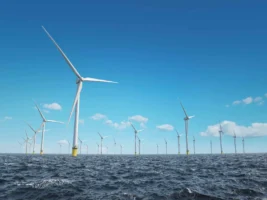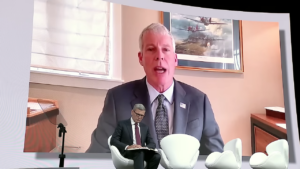The Australian Energy Market Commission has provided final approval for the establishment of a new ‘wholesale demand response mechanism’, that will allow large energy users to trade reductions in electricity use in the electricity market for the first time, in one of the biggest energy market reforms in decades.
The rule change means that the market can now encourage a smarter, demand side response that save energy use at critical peak times, rather than a “supply-side” response that simply encourages generators to burn more fuel. It will be particularly important in summer, and should lower prices for all.
Until now, the main market response has been to ramp-up electricity supply, and burn more fossil fuels, usually from costly and emissions-intensive gas and diesel generators. The big generation companies have built a business model predicated around it, knowing that they could reap substantial revenues from just a few hours of meeting “peak” demand.
For that reason, the ruling on demand response is one of the most fundamental changes to the design of the National Electricity Market in more than two decades.
The implementation of the new rule is now locked in for October 2021, after the AEMC resisted calls from some large energy companies to delay its introduction in light of the Covid-19 disruption, as they have also sought for another key market reform in the transition to five-minute settlement.
“Despite COVID, we still need to keep prices down, keep the market working efficiently and work to lower emissions in the energy sector,” AEMC chief executive Benn Barr said in a statement.
The AEMC said that the introduction of the new rule for large energy users was a key step in the evolution of the National Electricity Market in response to changing technology and energy needs.
The advocates had wanted the rule maker to go further, and extend the option to households and businesses. Again, under pressure from the incumbents, the AEMC demurred, but says that it will come in the next phase of market reforms and the shift to a ‘two-sided’ market.
“We are taking a sensible, stepped approach to a two-sided market by first allowing larger energy users to routinely trade their energy use in the wholesale market,” Barr said. “Once the two-sided market is up and running, we can retire this wholesale demand response mechanism because it will no longer be needed.”
“But taking a stepped approach to consumer participation in the market is cheaper, more practical and safer for households and businesses. If we applied the change to both large and small consumers at once it would involve significant, complex and costly system changes that would end up on household bills.”
The rule had been jointly proposed by three advocacy groups, including think tank The Australia Institute, the Public Interest Advocacy Centre and the Total Environment Centre, which welcomed the final determination from the AEMC.
“Big energy users like factories and farms will be able to earn money by saving energy during heatwaves and at other times when electricity prices are high. This will push down prices for all consumers, improve reliability and help Australia safely retire our 20 remaining coal-fired power stations,” the Australia Institute’s Dan Cass said.
The groups said that they would work with the AEMC to support the implementation of the new rule, as well as opportunities to expand the ability for households and small businesses to participate in a demand response scheme.
“We will continue to push for households and small businesses – that is, the other 90% of customers – to be able to reduce their energy costs by participating in the demand response market,” the Total Environment Centre’s Mark Byrne said.
A new category of energy market participant will be created under the mechanism, a “demand response service provider” that will be able to participate alongside electricity generators to sell reductions in energy usage.
This category will be limited to large energy users, which have direct control over their consumption levels, to help manage the initial predictability and reliability of the mechanism, with the AEMC saying that as technology evolves to allow greater control over aggregated household energy consumption, the mechanism may be expanded to smaller users.
Demand response service provider Enel X welcomed the AEMC’s approval of the rule change.
“The new demand response mechanism will open up opportunities for investment in demand response, providing customers with more choice and lower prices, and helping activate the significant amount of latent demand response capability in the NEM,” Enel X’s Australian managing director Jeff Renaud said.
Federal energy and emissions reduction minister Angus Taylor likewise welcomed the new rule, saying it would provide a new way to manage electricity supplies during peak demand periods.
“This reform will help avoid spikes in electricity demand that can increase prices, and can cause unexpected blackouts,” Taylor said. “This is a great opportunity to strengthen energy-intensive industries, like smelters, by rewarding them for the role they play in making the grid affordable and reliable.”
“The benefits of wholesale demand response will flow through to all households and businesses through lower electricity bills and improved network reliability.”
The AEMC said that it had received requests to delay the introduction of the wholesale demand, with some major energy companies using the Covid-19 to lobby for delays to the introduction of new energy market rules, as they have done with other crucial reforms to the energy market.
The AEMC received submissions from some of Australia’s largest energy companies, including AGL Energy, Snowy Hydro, Origin Energy and EnergyAustralia, all calling for the new mechanism to be delayed. Energy companies have already requested a delay to the switch to five-minute settlement in the National Energy Market.
The AEMC said that its assessment of the impacts of the implementation of the wholesale demand response mechanism found that the largest burden rested with AEMO, which has said that it is willing and able to proceed without delay.
“We have considered requests to delay this reform, but we think the case for pressing forward is strongest because acting now will help keep the power system reliable and secure ahead of the 2021/22 summer,” AEMC chief executive Benn Barr said.
The groups proposing the rule change, which included The Australia Institute, the Public Interest Advocacy Centre and the Total Environment Centre pushed back against calls for the rule’s introduction to be delayed, saying in a joint statement that “delaying the introduction of a mechanism that may bring down power prices places an extra burden on people at a time when they may already be struggling to recover.”
“The AEMC has been pressured by incumbent businesses to defer important reforms in the name of – sometimes questionable – claims of COVID-19 impacts on systems changes. Hats off to the AEMC for recognizing this reform is essential – we would say already 5 to 10 years late, but better late than never.” PIAC’s head of energy policy Craig Memery said.
RenewEconomy and its sister sites One Step Off The Grid and The Driven will continue to publish throughout the Covid-19 crisis, posting good news about technology and project development, and holding government, regulators and business to account. But as the conference market evaporates, and some advertisers pull in their budgets, readers can help by making a voluntary donation here to help ensure we can continue to offer the service free of charge and to as wide an audience as possible. Thank you for your support.









